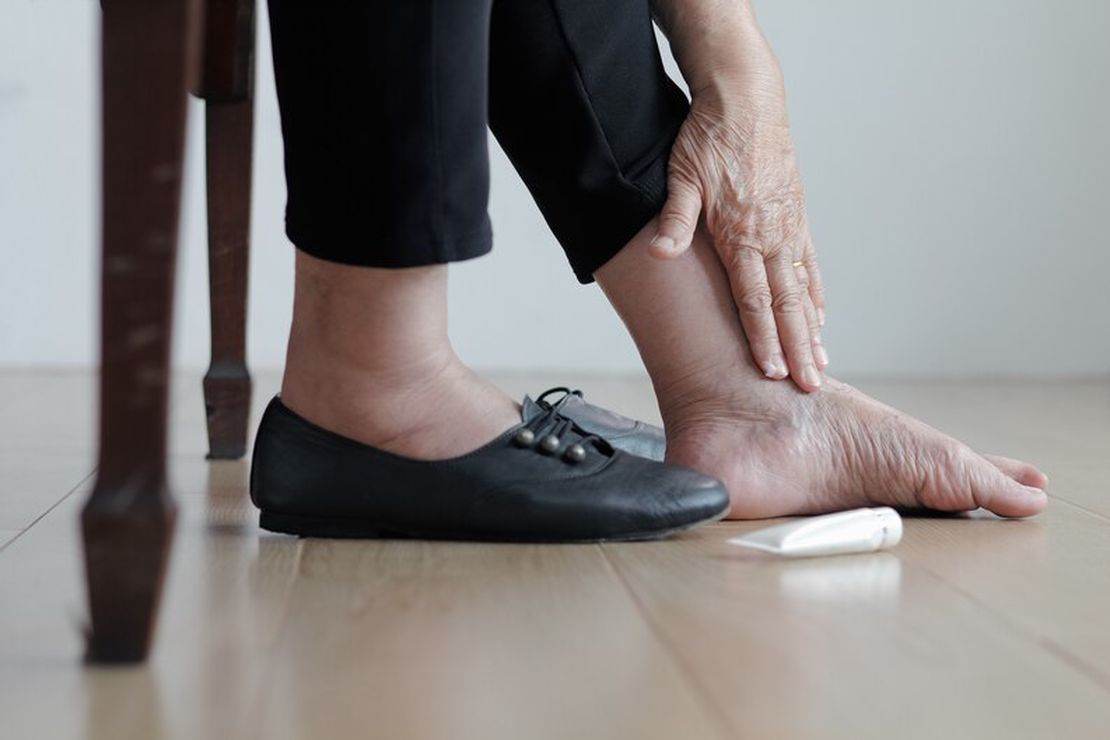Comprehensive Guide to Osteomyelitis: Bone Infection in Diabetic Foot
Osteomyelitis is a serious type of infection characterized by inflammation of bone tissue and marrow. Usually caused by bacteria, this condition can lead to permanent bone damage, loss of function, and even limb loss if left untreated. Individuals with chronic diseases such as diabetic foot and diabetes are at high risk for developing osteomyelitis. Early diagnosis and proper treatment are vital for preventing these serious complications for patients seeking diabetic foot treatment in Istanbul.
For basic information about diabetic foot, you can read our article What Happens When Diabetes Affects the Feet?.
Treatment of osteomyelitis often requires a combination of many different approaches. The goals of treatment are to control the infection, reduce inflammation, repair bone tissue and relieve symptoms.
Treatment usually involves the following steps:
-
Antibiotic therapy: Long-term antibiotic treatment is needed to control the bacterial infection that causes osteomyelitis. The medicines are usually given intravenously (IV) and are used for at least six weeks or longer. It is very important that antibiotics are used regularly.
-
Surgical intervention: If osteomyelitis becomes severe or chronic, surgical intervention may be needed. Surgical methods can be used to remove infected bone and tissue fragments, drain inflamed areas or repair bone using bone grafts. Surgical interventions are usually combined with antibiotic treatment.
-
Symptom management: Treatment for osteomyelitis also includes relieving symptoms. Painkillers may be used to control pain. Methods such as cold application or elevation can be used to reduce inflammation and swelling.
Throughout the treatment process, it is important that the patient attends regular check-ups with the doctor and adheres fully to the treatment. The healing process can often be lengthy and starting treatment early helps to prevent the spread of infection and the development of serious complications.
What are the Symptoms of Osteomyelitis and Diabetic Foot?
Osteomyelitis symptoms can vary depending on the location and severity of the infection. The most common diabetic foot symptoms and osteomyelitis findings are:
- Pain: Throbbing and severe pain in the infected bone area. In diabetic foot, pain may sometimes not be felt.
- Swelling, Redness, and Heat Increase: Visible signs of inflammation in the infection area and swelling in the foot.
- Discharge: Purulent discharge from a wound or fistula (inflammation canal) in the infected area.
- General Symptoms: High fever, chills, night sweats, fatigue, and general illness.
- Movement Restriction: Difficulty and pain in moving the affected joint or limb.
In diabetic patients, pain sensation may decrease due to nerve damage (neuropathy). Therefore, diabetic foot symptoms such as swelling, redness, or foul-smelling discharge in the foot should be taken seriously even if there is no pain. It is important to consult a specialist quickly when such symptoms are encountered in Istanbul diabetic foot centers.
Causes of Osteomyelitis and Risk Factors in Diabetic Foot
Bacteria can reach bone tissue through several routes:
- Through Blood Circulation: An infection elsewhere in the body (such as urinary tract or lung infection) can be carried to the bones through blood circulation.
- Direct Spread: Bacteria can reach the bone directly after open fractures, deep wounds, or surgical operations. Particularly, non-healing wounds such as diabetic foot ulcers create a gateway for infection to progress from soft tissue to bone.
- Spread from Adjacent Tissues: Infections in adjacent tissues such as dental abscess or sinusitis can spread to bone.
Main Risk Factors:
- Diabetes: Diabetic patients constitute the largest risk group due to high blood sugar, circulation disorders, and weakened immune system. Diabetic foot is also frequently seen in large cities like Istanbul.
- Circulation Disorders: Vascular problems such as peripheral arterial disease make it difficult to fight infection.
- Trauma and Surgery: Recent bone surgeries or serious injuries.
- Conditions that Suppress the Immune System: People with weakened immune systems due to reasons such as cancer treatment or organ transplantation.
For more information about preventing diabetic foot wounds and wound care, you can read our article Burger Disease and Wound Care.
How is Osteomyelitis Diagnosed? Diagnostic Methods in Istanbul Diabetic Foot Centers
Correct diagnosis is the first step of effective treatment. The following methods are usually used in the diagnostic process:
- Physical Examination: The doctor evaluates signs of infection (swelling, redness, discharge) and sensitivity. Diabetic foot symptoms are also observed during this examination.
- Blood Tests: Infection markers such as white blood cells, C-reactive protein (CRP), and erythrocyte sedimentation rate (ESR) in the blood are checked.
- Imaging Methods:
- X-ray: Can show bone damage but may appear normal in early stages of infection.
- Magnetic Resonance (MRI): It is the most sensitive and valuable method in showing infection in bone marrow and surrounding soft tissues.
- Computed Tomography (CT): Shows structural changes in bone and abscess formations in detail.
- Bone Biopsy: Usually considered the “gold standard.” A small sample taken from the infected bone both confirms the diagnosis and helps determine the specific microorganism causing the infection and antibiotic sensitivity.
Osteomyelitis and Diabetic Foot Treatment Methods
Osteomyelitis treatment requires a multidisciplinary approach aimed at eliminating the infection, minimizing bone damage, and preserving functions. These approaches are also applied in Istanbul diabetic foot treatment centers.
1. Antibiotic Treatment
It is the cornerstone of treatment. Usually 4 to 6 weeks, sometimes longer antibiotic use is required to control the infection. Treatment often starts intravenously (IV) and can continue with oral medications later. Antibiotics targeting the directly responsible bacterium are selected according to biopsy results. Antibiotic treatment is of great importance in diabetic foot infections.
2. Surgical Intervention (Debridement)
Surgical intervention is mandatory in chronic or antibiotic treatment-resistant osteomyelitis cases. Surgical debridement completely cleans infected and dead bone tissues (sequestrum). This procedure is critical for antibiotics to be effective and for the body to initiate the healing process. In some cases, antibiotic-filled materials or bone grafts can be used to fill the resulting cavity. These procedures are successfully applied in Istanbul diabetic foot surgical centers.
3. Supportive Treatments
- Pain Management: Painkillers are used for patient comfort.
- Hyperbaric Oxygen Therapy (HBOT): Particularly effective in osteomyelitis cases due to chronic wounds that are difficult to heal with circulation disorders (such as diabetic foot). Breathing 100% oxygen in a pressurized chamber strengthens the fight against infection and accelerates wound healing by increasing tissue oxygenation.
- Wound Care: If there is an open wound, regular and appropriate dressings ensure the wound is kept clean. Regular care in diabetic foot wounds plays a key role in preventing infection.
For more detailed information about diabetic foot treatment, you can review our treatment methods page. You can learn about modern treatment methods by reading our article Hyperbaric Oxygen Therapy.
Frequently Asked Questions (FAQ)
What is osteomyelitis?
Osteomyelitis is a serious infection characterized by inflammation of bone tissue and marrow, usually caused by bacteria. It can lead to permanent bone damage if not treated.
What are the symptoms of osteomyelitis?
Symptoms include severe pain, swelling, redness, heat increase, purulent discharge, fever, chills, and movement restriction in the affected area.
How is osteomyelitis treated?
Treatment includes long-term antibiotic therapy, surgical debridement, and supportive treatments. Early diagnosis and treatment are crucial.
Is osteomyelitis common in diabetic foot?
Yes, diabetic foot patients are at high risk for osteomyelitis due to circulation disorders and weakened immune system.
Can osteomyelitis be prevented?
Yes, with proper wound care, blood sugar control, and early treatment of infections, osteomyelitis can be prevented.
Conclusion: Early Diagnosis Saves Lives – Diabetic Foot and Osteomyelitis
Osteomyelitis is a complex infection that poses a serious threat, especially for diabetic patients and those experiencing diabetic foot problems. However, it can be successfully managed with modern diagnostic and treatment methods. If you notice diabetic foot symptoms such as non-healing wounds, swelling, redness, and pain in your feet or anywhere in your body, it is critical to consult a specialist without delay. Early and correct intervention in Istanbul diabetic foot centers is the most effective way to protect your health by preventing permanent damage. Don’t forget to get expert support for more information about diabetes, foot health, and diabetic foot symptoms.
For more information about diabetic foot and infections, you can also read our article Number of Diabetic Patients in Turkey.



